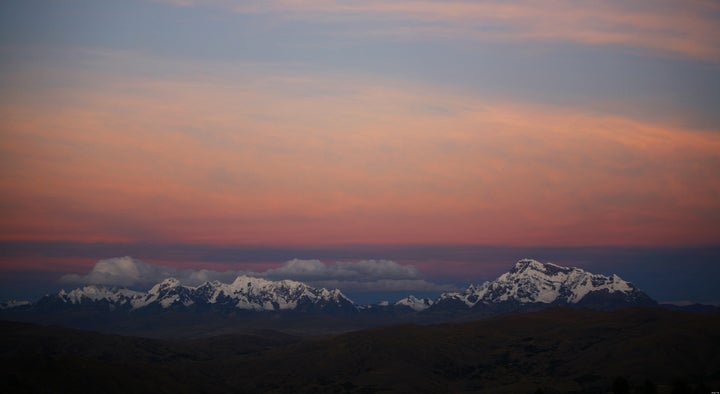
This is the tale of two archaeological sites. The first I'm guessing you haven't heard of. Roughly 11,500 years ago, a community of nomadic hunter gatherers in what is now southeastern Turkey created the oldest human-built place of worship we know of. It's called Göbekli Tepe, and it sits on a hilltop sanctuary not too far from Turkey's border with Syria. What's most fascinating about Göbekli Tepe is the glimpse it gives us into the Eurasian pre-Neolithic period and what role ceremony played in pre-agricultural groups. Before there were domesticated animals or cultivated fields, the nomads around Göbekli Tepe decorated monoliths with icons of lions, gazelles, vultures and snakes (among others) and, in all likelihood, worshiped beneath them.
The other site can be found a hemisphere away, 8,000 miles to the southwest, nestled in the mountains of southcentral Peru. It's called Machu Picchu and, of course, you've heard of it. Similar to Göbekli Tepe, Machu Picchu was also a ceremonial center, the royal estate of Incan Emperor Pachacuti. Although the stones of Machu Picchu don't have any iconography carved into them, there's no doubt their placement and shape played an important role in ceremonies and, in this regard, the sacred monoliths of both sites reveal certain aspects of their respective cultures. The stones of both sites also reveal a silent crisis that exists today. It's called the crisis of vanishing heritage and it's occurring all over the world.
On one end of the crisis' spectrum sit the heritage sites you've never heard of, the Göbekli Tepes of the world. They're found in developing countries like Turkey, China, India, and Guatemala. Their archaeological treasures often lie unprotected, subject to the effects of time, weather, and looting. The technology to conserve these sites exists, but obtaining proper funding, regional support, and on-site management can be challenging when public awareness and interest are lacking.
On the other end of the spectrum sit the heritage sites everyone has heard of... the Machu Picchus, Tikals, and Angkor Wats of the world. While time and weather (and some looting) affect these sites, too, the largest threats to their survival are overpopulation and unsustainable tourism - the sites are overrun with tourists who, in their eagerness to walk everywhere and touch everything, are literally destroying the places they sought to preserve. Management plans rarely include proper visitor control and even the best managers are under tremendous pressure to accept tourist dollars today despite the cost tomorrow.
So, how can we manage these sites in a sustainable fashion? How can we create a system of site selection, preservation, and conservation that helps the local economy protect a cultural treasure that ultimately belongs to the world? How can technology be leveraged to assist these efforts? These are just some of the questions being asked today at Stanford University in California, where a group of experts in conservation, development, archaeology, philanthropy, technology, tourism and travel have gathered to attend the first Forum on Cultural Heritage in a Developing World. Our goal: to review the data on heritage conservation efforts, discuss what's working (and what's not), and determine what solutions make sense for the future. As someone in the media who's been to hundreds of archaeological sites around the world, I've happily agreed to serve as the Master of Ceremonies for the Forum. The keynote address -- "Turning Oppression into Opportunities" -- will be delivered by Pulitzer Prize winning New York Times journalist and author Nicholas Kristof.
The Forum and the accompanying 68-page report titled Saving Our Vanishing Heritage are the product of the Global Heritage Fund (GHF), a California-based international conservancy whose mission is "to protect, preserve, and sustain the most significant and endangered cultural heritage sites in the developing world." (Full disclosure: I'm on GHF's board.) GHF isn't afraid to tackle heritage problems head on, to find solutions that help turn the tide, create public interest and ultimately protect these cultural treasures from their greatest threat: us.
The hard truth is that our planet is facing a number of population-driven crises right now, including environmental destruction, the loss of biodiversity and the collapse of ocean life. But whereas the rainforests and the oceans have their champions, little has been said on behalf of cultural heritage sites. Perhaps it's because the stones and bones of archaeological sites hold less appeal than the fur of pandas and fins of sharks. Perhaps it's because civilizations have always devalued and destroyed the accomplishments of those they've conquered -- the churches of the Spanish, for example, where built on top of the temples of the Inca.
I sincerely hope that GHF and the Forum can help create a new vision for sustainable tourism and conservation, a model in which heritage sites generate revenue without sacrificing long-term preservation. Without a proper plan, sites will continue to disappear and, unlike a rainforest, once a heritage site is gone, it's gone forever. What managed to survive for 10,000 years may disappear -- silently, suddenly -- within just a few decades.
The cultural tapestry that depicts the story of our collective heritage benefits from diversity; it celebrates the richness of language, the expressiveness of religion, the beauty of art. In a world too often focused on short-term issues and Western ideologies, we must make the effort to protect cultural heritage sites. Whether it's Göbekli Tepe or Machu Picchu, the stories of our ancestors matter. Heritage matters. Our challenge is to recognize this before it's too late.